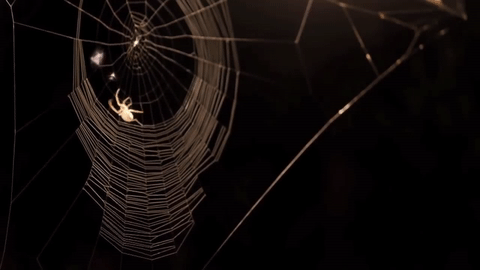At the Cancer Bioengineering Group, we use different types of scaffolds to mimic the 3D structure of tumours outside the body. We use these scaffolds to test new therapeutics and understand the tumour microenvironment. But I bet you didn’t think we had this in common with spiders?
Spiders make their webs by producing silk from specialized glands in their abdomen. They release the silk through spinnerets located at the back of their abdomen, then use their legs to manipulate the silk strands into intricate patterns, depending on the species and purpose of the web.

The process of web building begins with a scaffold. The specialized glands that spiders use are called spinnerets, and they produce liquid silk proteins that solidify into a thread when they come into contact with air. Using their many legs, spiders can manipulate the threads by changing the speed and tension they enforce on the silk, thus controlling thickness, stickiness and strength. They first lay a framework of non-sticky threads, known as scaffolding. And layer by layer, different species of spiders will add their own artistic sticky silk design to the scaffold depending on their aim. Take the deadly redback spider for example, these guys have a utilitarian approach to web building relying on their webs mainly for shelter and capturing prey. As such, they don’t put much effort into producing irregular and messy homes. In comparison, the orb-weaving spider produces “Mona Lisa”-like designs, with complex geometric patterns and intricate designs. The differences in effort seem to come from the environments in which the webs are located, with the redbacks choosing more sheltered environments and thus not needing much strength to their webs. Whereas orb-weaving spiders are more adapted to a range of environments, from forests to grasslands to urban gardens. So, while the redback gets a lot of attention for their neurotoxic venom, they need to step up their artistic skills to match that of their orb-weaving colleagues.
The redback spider and its webs are reminiscent of an aggressive tumour, which is erratic, dangerous, and unpredictable. We want to find the “anti-venom” for such tumours so we can wipe them out for good.
Watch this amazing web-building timelapse by BBC Earth.
Written by Ellen King

